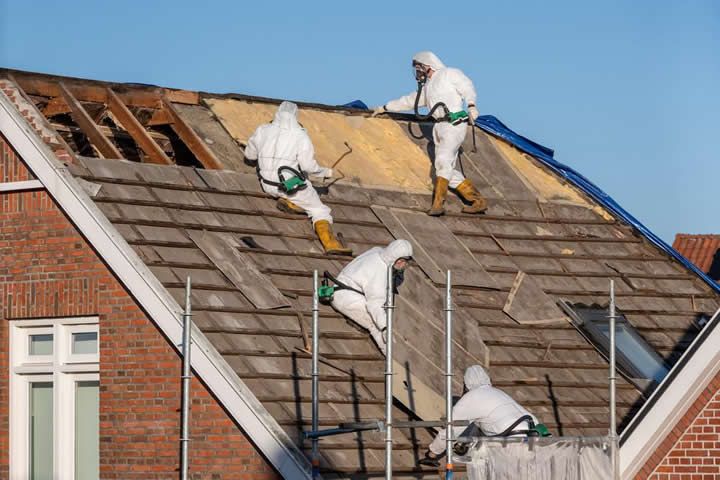Roof underlayment is the unsung hero of roofing systems, playing a vital role in protecting buildings from various environmental threats. Its significance spans across different roofing types, including the increasingly popular metal roofs, shingles, and tiles.

What Is Roof Underlayment & Why It’s Important
Article from | SMARTECH
Roof underlayment is the unsung hero of roofing systems, playing a vital role in protecting buildings from various environmental threats. Its significance spans across different roofing types, including the increasingly popular metal roofs, shingles, and tiles. Roof underlayment, although not visible post-construction, is necessary to ensure the longevity and effectiveness of the roof.
What is Roof Underlayment?
Underlayment is a protective layer installed directly on the roof deck. It serves as a critical barrier between the roof deck and the external roofing material, be it metal, shingles, or tiles. These materials offer varying degrees of protection and adaptability to different roofing scenarios, with each type suited to specific conditions and roofing materials. Here are some examples:
- Asphalt-Saturated Felt: This traditional underlayment, known for its affordability and ease of installation, comes in varying thicknesses, typically designated as 15-pound and 30-pound. It offers basic water resistance and is suitable for moderate climates.
- Synthetic Underlayment: Made from polypropylene or polyethylene, this type is stronger and more durable than felt. It’s resistant to UV rays and moisture, making it ideal for harsh weather conditions.
- Rubberized Asphalt: This premium option offers superior waterproofing capabilities. It has a sticky underside that seals around nails, making it an excellent choice for wet climates and low-slope roofs.
- QUATTRO Insulation: This is a multi-layer reflective insulation system, combining the benefits of insulation with the traditional roles of underlayment. Its unique four-layer aluminum construction offers exceptional thermal performance, reduces energy costs, and provides a durable barrier, making it an efficient and versatile choice for a variety of roofing types.
Learn more about How To Choose The Best Underlayment for Metal Roofs
Benefits of Roof Underlayment
Roof underlayment is a multifaceted component that provides essential protection and efficiency for roofing systems:
- Secondary Water Barrier: Acts as a crucial defense against leaks, protecting the roof deck from water damage and potential costly repairs.
- Insulation & Energy Efficiency: Helps maintain stable interior temperatures, reducing energy needs and contributing to cost savings.
- Sound Dampening: Especially beneficial for metal roofs, it reduces external noise for a more comfortable indoor environment.
- Improved Roof Longevity: Protects roofing materials from the elements, reducing wear and extending the roof’s lifespan.
- Vapor Barrier: Prevents moisture from inside the building from condensing on the underside of the roof, critical in avoiding mold and structural issues.
- Enhanced Roof Aesthetics: Provides a flat surface for roofing material, ensuring a more aesthetically pleasing finish.
Underlayment in Roofing System Design
In the design of a roofing system, underlayment is strategically positioned to contribute significantly to the overall functionality and resilience of the roof. Its role extends beyond just being a layer; it’s a critical component in the architectural framework of the roof. By sitting directly on the roof deck, underlayment serves as a foundational element that supports and enhances the performance of the external roofing material. It ensures that the top layer remains intact and functions optimally, effectively complementing the roof’s primary protective measures.
One of the key aspects of underlayment in roofing system design is its ability to bridge the gap between the roof deck and external materials, allowing for a smoother application of the top layer. This smooth application is crucial in preventing potential issues like misalignment or unevenness that could compromise the roof’s integrity. Additionally, the underlayment plays a vital role in managing external factors such as wind uplift and thermal shock, which can adversely affect the roof.
By providing a stable and consistent base, underlayment helps in mitigating these effects, thereby enhancing the roof’s ability to withstand harsh environmental conditions. Ultimately, the integration of underlayment into the roofing system is a testament to its indispensable value in building a durable, efficient, and long-lasting roof.
QUATTRO Insulation: A Superior Roof Underlayment Choice
Moving beyond traditional options, QUATTRO Insulation stands out as a multi-layer reflective insulation system, merging the benefits of thermal insulation with the essential roles of underlayment. This innovative solution is crafted with a unique four-layer aluminum construction that not only delivers exceptional thermal performance but also offers an array of advantages over conventional roofing felt:
- Lightweight Efficiency: Weighing just 22 oz/yd2, QUATTRO is significantly lighter than felt underlay, adding less weight to your roof structure and easing the burden on your building.
- Ease of Installation: Its lighter weight makes QUATTRO easier and safer to install, reducing labor intensity and enhancing worker safety.
- Durability Against the Elements: Designed to withstand high winds and foot traffic, QUATTRO’s tear-resistant properties ensure it holds up better than roofing felt.
- Moisture and Fungal Resistance: Unlike roofing felt, QUATTRO does not absorb moisture, thus preventing fungal growth and ensuring long-term roof integrity.
- UV Resistance: QUATTRO’s composition allows it to resist degradation from sunlight more effectively than roofing felt, contributing to its longevity.
- Convenient Handling: QUATTRO’s ease of handling and faster installation process streamline roofing projects, saving time and effort.
- Chemical Stability: Free of volatile compounds found in traditional roofing felt, QUATTRO maintains its integrity over time, even in heat, resisting the tendency to become moisture-absorbent and fragile.
These distinctive qualities of QUATTRO Roof Underlayment make it an efficient and versatile choice for a variety of roofing types, from residential homes to commercial buildings.
The content & opinions in this article are the author’s and do not necessarily represent the views of AltEnergyMag
Comments (0)
This post does not have any comments. Be the first to leave a comment below.
 What Is Roof Underlayment & Why It’s Important
What Is Roof Underlayment & Why It’s Important 